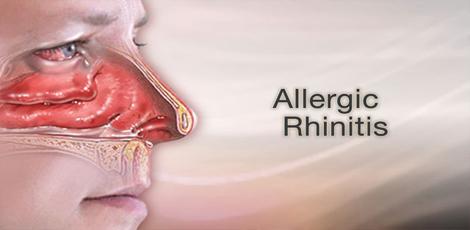If you are suffering from an allergic rhinitis issue, then this article would throw some light on how pollution outside could worsen this health issue!!
Allergic rhinitis refers to a condition that would cause inflammation in the nose due to overreaction of the immune system due to the allergens such as pollen, dust etc present in the air. Point is that this issue has become a growing health concern across our country.
Persons with allergic rhinitis would show several symptoms like nasal blocks, sneezing, running nose, itchy eyes/nose/throat, coughing, clogged ears etc. Some persons with this issue would have reduced sense of smell also.
There are 2 types of allergic rhinitis such as seasonal allergic rhinitis that occurs at specific times in a year and perennial where allergic rhinitis would occur throughout the year.
Strong association between pollution and allergic rhinitis:
According to some research studies conducted in recent times it has been brought out that there is some strong connection between the pollutants present in the environment and allergic reactions in us. Truth is that air pollution caused by emissions from several vehicles has increased respiratory allergies such as allergic rhinitis.
It is worthy to note that various pollutants like nitrogen dioxide, ozone, particulate matter (PM 2.5 and PM 10), sulphur dioxide etc could make respiratory diseases such as allergic rhinitis worse. The shocking piece of information is that in India about 77% of the population are exposed to PM 2.5 levels higher than what WHO or World Health organisation recommends.
Since 2019 onwards, urban areas have been affected with Mumbai having 2.6% increase in toxic PM 2.5 levels. It must be noted that a 20% increase in the upper respiratory infection cases has been witnessed in Hyderabad. Severe rhinitis symptoms are witnessed in those persons who have been exposed to PM 2.5 and PM 10. It is true that air that is present inside the houses can also be responsible for allergic rhinitis issues. Point is that indoor pollutants like pet hairs, mould, skin flakes and harmful chemicals released from household products etc could result in allergic reactions in us. This is mostly witnessed in kids and in the senior persons etc who are very sensitive to allergens.
How pollution can worsen allergic rhinitis?
When the air that has been polluted enters our body through our nose, our breathing system would get affected. Some particles get filtered by our nose but small particles would slip through. The particles could then go to different parts of airways depending on their sizes. Larger particles or PM19 would stay y in the nose, windpipe throat etc. Finer particles or PM 2.5 could reach deeper into our lungs and ultrafine particles or PM0.1 could travel into the air sacs present in our lungs.
It is noteworthy that ultrafine particles PM 0.1 are more dangerous when compared to larger particles as they would go deeper into our lungs. They can lead to symptoms like sneezing, nasal congestion, runny nose etc in us. Our symptoms can worsen when PM 2.5 combines with allergens such as pollen, dust mites etc. Our allergy risk would be increased by pollution by increasing allergen levels leading to weak immunity, inflammation, irritation etc and would make the present conditions worse.
Managing allergic rhinitis:
Conventional medications might not be able to fully control symptoms due to pollution and due to this it would be difficult to manage the allergic rhinitis symptoms in a polluted environment. Therefore, addressing this issue would need a combination of medical management, lifestyle and societal changes to reduce exposure and to improve the life quality of the affected persons.


